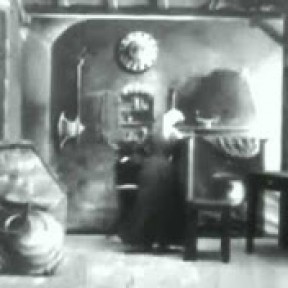Silent | Georges Méliès - The Impossible Voyage (1904)
The Impossible Voyage (French: Voyage à travers l'impossible), originally released in the US as An Impossible Voyage and in the UK as Whirling the Worlds, is a 1904 French silent film directed by Georges Méliès.
Based in part on Jules Verne's play Journey Through the Impossible and modeled in style and format on Méliès's earlier, highly successful A Trip to the Moon, the film is a satire of scientific exploration in which a group of geographers attempt a journey into the interior of the sun.
The Impossible Voyage was made during the summer of 1904. The film, running to 374 meters, was Méliès's longest film to date, and cost about ₣37,500 (US$7,500) to make. In its staging and design, the film is symmetrical with Méliès's A Trip to the Moon: while the astronomers' progress toward the moon in that film is consistently depicted as left-to-right motion, the Institute of Incoherent Geography's progress toward the sun in The Impossible Voyage is consistently right-to-left.
While most of the film was shot inside Méliès's glass studio, the scene at the foot of the Jungfrau was filmed outdoors, in the garden of Méliès's property in Montreuil, Seine-Saint-Denis. The Impossible Voyage was one of the most popular films of the first few years of the twentieth century, rivaled only by similar Méliès films such as The Kingdom of the Fairies and the massively successful A Trip to the Moon.
The film critic Lewis Jacobs said of the film:
This film expressed all of Méliès's talents. In it his feeling for caricature, painting, theatrical invention, and camera science became triumphant. The complexity of his tricks, his resourcefulness with mechanical contrivances, the imaginativeness of the settings and the sumptuous tableaux made the film a masterpiece for its day.
Storyline:
Using every known means of transportation, several savants from the Geographic Society undertake a journey through the Alps to the Sun which finishes under the sea.












































